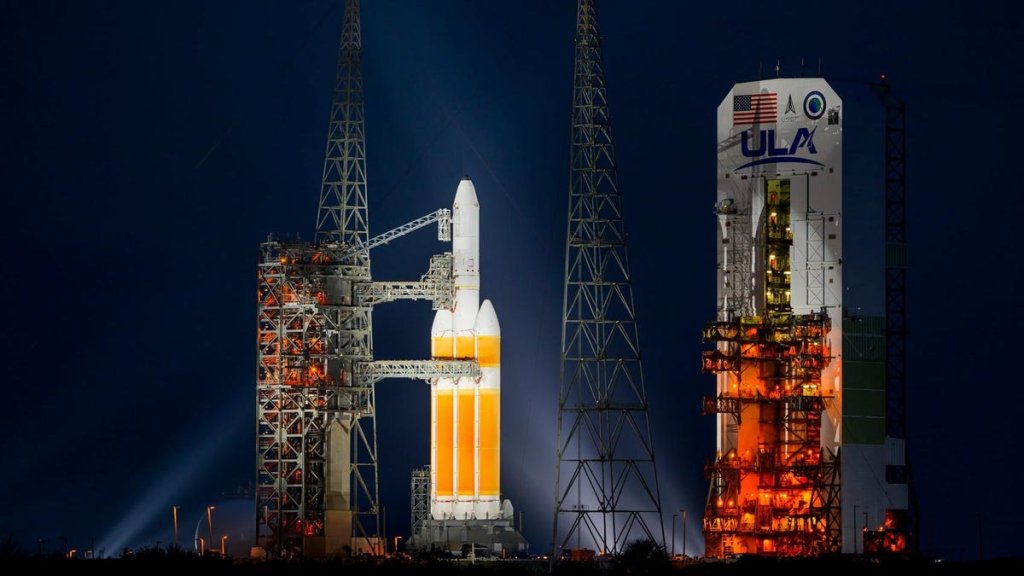
The grand Delta finale is upon us, as United Launch Alliance (ULA) prepares to launch its last Delta IV rocket and bid farewell to an iconic rocket family that dates back to the Cold War.
The Delta IV Heavy rocket is scheduled to launch on Thursday at 2:03 p.m. ET from Space Launch Complex-37 at Cape Canaveral Space Force Station in Florida. ULA will broadcast the rocket’s final liftoff on its website, and you can also tune in through the live feed below. The broadcast will begin at around 1:35 p.m. ET. Forecasters are currently predicting a 30% chance of favorable weather for the launch. Forecasters are currently predicting a 30% chance of favorable weather for the launch.
The 235-foot-tall (72-meter), two-stage Delta IV Heavy rocket consists of three booster cores, each powered by an RS-68A engine. ULA describes its last of the Delta rockets as the “most metal,” as it creates a massive ball of fire seconds before its engines roar to life, engulfing the booster in flames. This fiery, unsettling spectacle—which chars the rocket’s boosters—is an intentional and controlled aspect of the launch process, designed to burn off excess hydrogen. This launch marks our last opportunity to witness this iconic display.
For its 16th and final flight, the Delta IV Heavy will carry a classified payload for the National Reconnaissance Office as part of the NROL-70 mission. The payload is likely a spy satellite that will be deployed in geostationary orbit.
The Delta IV family of medium-to-heavy launch vehicles made its debut in 2002, and became the closing chapter of the Delta legacy that came to fruition more than 60 years ago. The first Delta rocket launched on May 13, 1960, from SLC-17 at Cape Canaveral, marking the beginning of a program developed by the U.S. government to develop a suite of expendable launch vehicles used to carry payloads ranging from satellites to deep space missions.
Delta rockets launched three NASA rovers, Sojourner, Spirit and Opportunity, to explore the surface of Mars. The rocket family has had 388 launches spanning across six decades, evolving over time to become bigger and more advanced.
ULA’s new Vulcan Centaur rocket is designed to replace the Deltas. The two-stage-to-orbit, expendable, heavy-lift launch vehicle made its debut in January, sending the private Peregrine lander toward the Moon.

